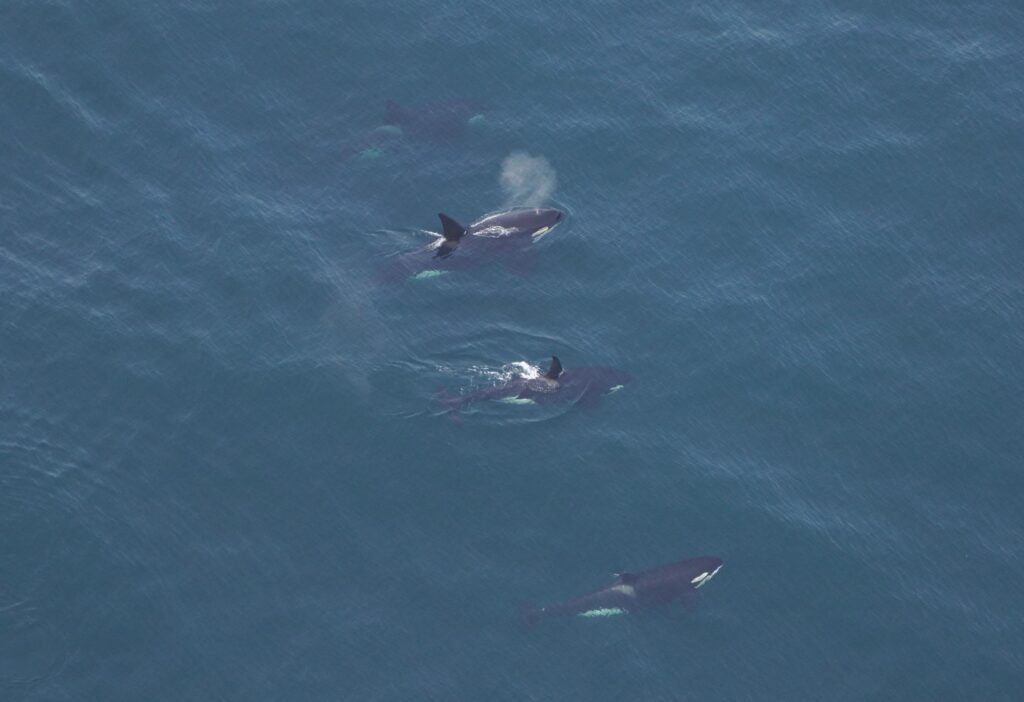Please note: We strongly recommend purchasing tickets online in advance to guarantee entry, as we do sell out on weekends.
Pod of whales sighted 40 miles south of Nantucket

BOSTON, MASS. (June 13, 2023) – In a rare sighting, New England Aquarium scientists spotted four killer whales swimming together as the research team flew aerial surveys 40 miles south of Nantucket, MA, on Sunday.
**PHOTOS AVAILABLE FOR DOWNLOAD HERE, WITH CREDIT TO NEW ENGLAND AQUARIUM**
Orla O’Brien, an associate research scientist who leads the aerial survey team for the Aquarium’s Anderson Cabot Center for Ocean Life, said it is “always unusual to see killer whales in New England waters.”
“Initially I could just see two splashes ahead of the plane,” said Katherine McKenna, assistant research scientist, who first spotted the whales. “As we circled the area, two whales surfaced too quickly to tell what they were. On the third surfacing, we got a nice look and could see the tell-tale coloration before the large dorsal fins broke the surface.”
“Seeing them swim in formation was just unreal,” said O’Brien. “We confirmed that there was one adult male, one adult female, and two juveniles in the pod. I think seeing killer whales is particularly special for us because it unlocks that childhood part of you that wanted to be a marine biologist,” O’Brien said, adding the species’ population is very small in western North Atlantic waters.
The four killer whales—also known as orcas—were among nearly 150 whales and dolphins that the team spotted during the seven-hour flight, including 23 fin whales counting a mother and calf, five minke whales, 62 bottlenose dolphins, and 20 humpback whales bubble feeding.
The only killer whale seen regularly in North Atlantic waters is “Old Thom,” a large male orca who is known to swim alone, sometimes alongside dolphins, in the Gulf of Maine and the Bay of Fundy. He was also spotted alone last Sunday off Provincetown. Prior to that, he was last seen in Massachusetts waters in May 2022, off of Cape Cod.
For more than a decade, the New England Aquarium has conducted aerial surveys over the waters south of Martha’s Vineyard and Nantucket, collecting data on all marine animals with a focus on protected species of whales and sea turtles. These surveys have been funded by the Massachusetts Clean Energy Center, the Bureau of Ocean Energy Management, NOAA, wind energy developers, and private foundations. The flights help monitor changes in animal populations, identify various animal species, and recognize trends using standardized data that has been collected over many years. Determining where right whales occur and how they are using habitats provides crucial information that can be used to better protect the critically endangered species.
MEDIA CONTACT:
Pam Bechtold Snyder – psnyder@neaq.org, 617-686-5068
